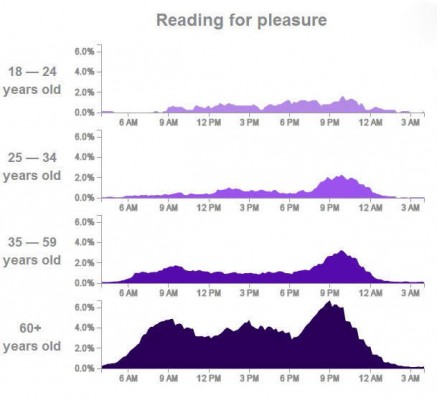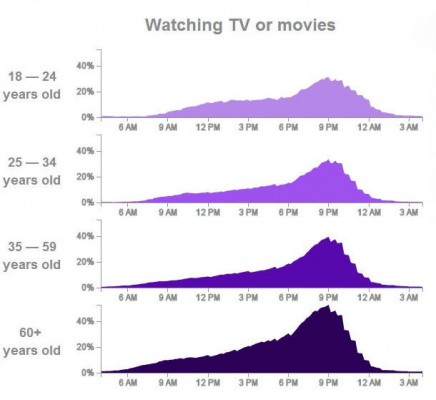“I worry that the superficial way we read during the day is affecting us when we have to read with more in-depth processing,” said Maryanne Wolf, a Tufts University cognitive neuroscientist and the author of “Proust and the Squid: The Story and Science of the Reading Brain.”…
Researchers are working to get a clearer sense of the differences between online and print reading — comprehension, for starters, seems better with paper — and are grappling with what these differences could mean not only for enjoying the latest Pat Conroy novel but for understanding difficult material at work and school. There is concern that young children’s affinity and often mastery of their parents’ devices could stunt the development of deep reading skills.
Linear vs. nonlinear reading
Before the Internet, the brain read mostly in linear ways — one page led to the next page, and so on. Sure, there might be pictures mixed in with the text, but there didn’t tend to be many distractions. Reading in print even gave us a remarkable ability to remember where key information was in a book simply by the layout, researchers said. We’d know a protagonist died on the page with the two long paragraphs after the page with all that dialogue.
The Internet is different. With so much information, hyperlinked text, videos alongside words and interactivity everywhere, our brains form shortcuts to deal with it all — scanning, searching for key words, scrolling up and down quickly. This is nonlinear reading, and it has been documented in academic studies. Some researchers believe that for many people, this style of reading is beginning to invade when dealing with other mediums as well.
“We’re spending so much time touching, pushing, linking, scrolling and jumping through text that when we sit down with a novel, your daily habits of jumping, clicking, linking is just ingrained in you,” said Andrew Dillon, a University of Texas professor who studies reading. “We’re in this new era of information behavior, and we’re beginning to see the consequences of that.”
The consequences may include a dwindling proficiency in “reading long sentences with multiple, winding clauses”. Wolf hears from college professors about this problem.
Several English department chairs from around the country have e-mailed her to say their students are having trouble reading the classics.
“They cannot read ‘Middlemarch.’ They cannot read William James or Henry James,” Wolf said. “I can’t tell you how many people have written to me about this phenomenon. The students no longer will or are perhaps incapable of dealing with the convoluted syntax and construction of George Eliot and Henry James.”
Convoluted prose is not limited to fiction, but also exists in history and science texts. I am currently reading a text dealing with the tax benefits of college savings options, and it’s replete with convoluted syntax.
Compared to print, online content lends itself to nonlinear reading. Sentences tend to be shorter and syntax is simpler. Links encourage interruptions.
Sometimes we are biased in thinking screen reading offers superior comprehension. This might be especially true for younger readers.
…A 2012 Israeli study of engineering students — who grew up in the world of screens — looked at their comprehension while reading the same text on screen and in print when under time pressure to complete the task.
The students believed they did better on screen. They were wrong. Their comprehension and learning was better on paper.
Using the Internet is ‘supereasy’, but ‘deep reading, advanced math, scientific reasoning’ is hard.







